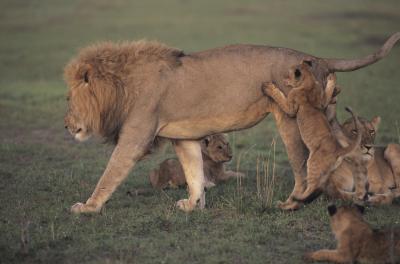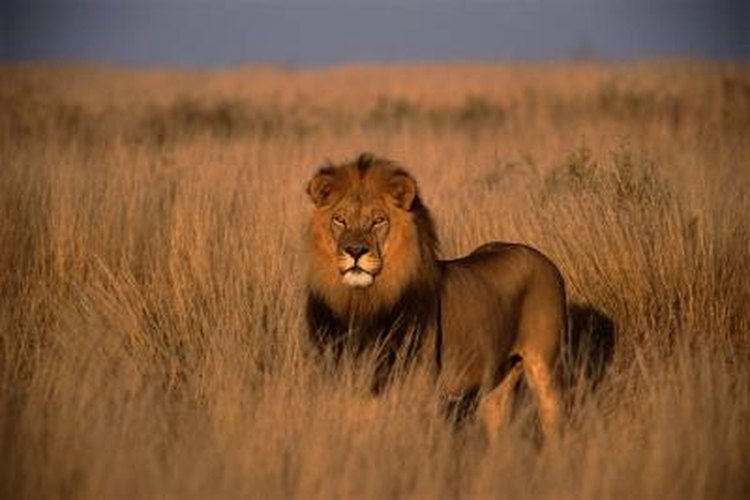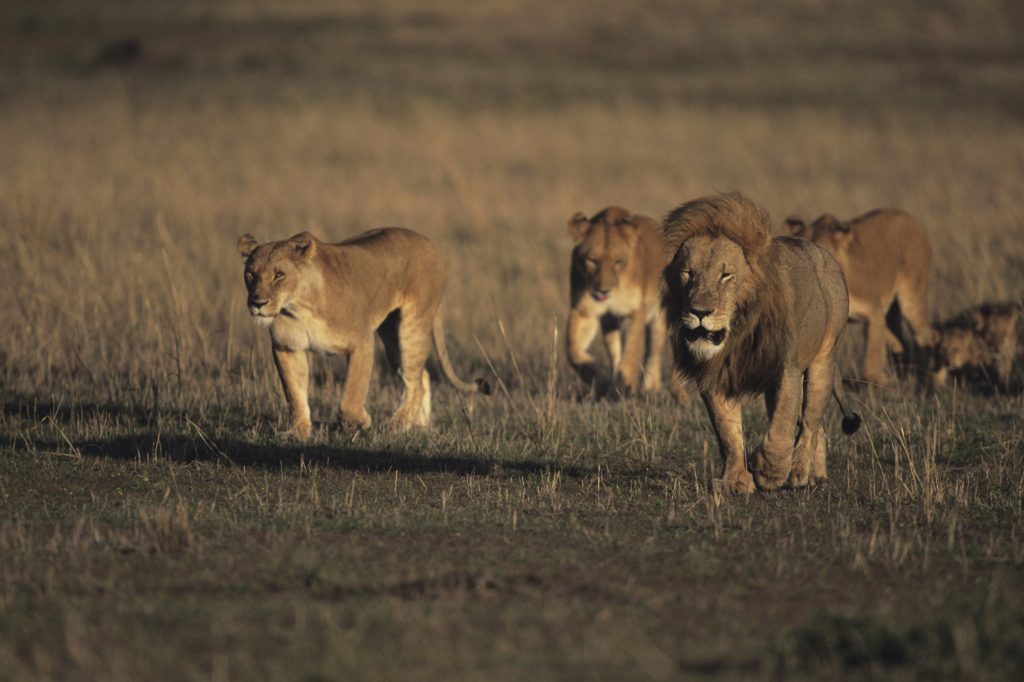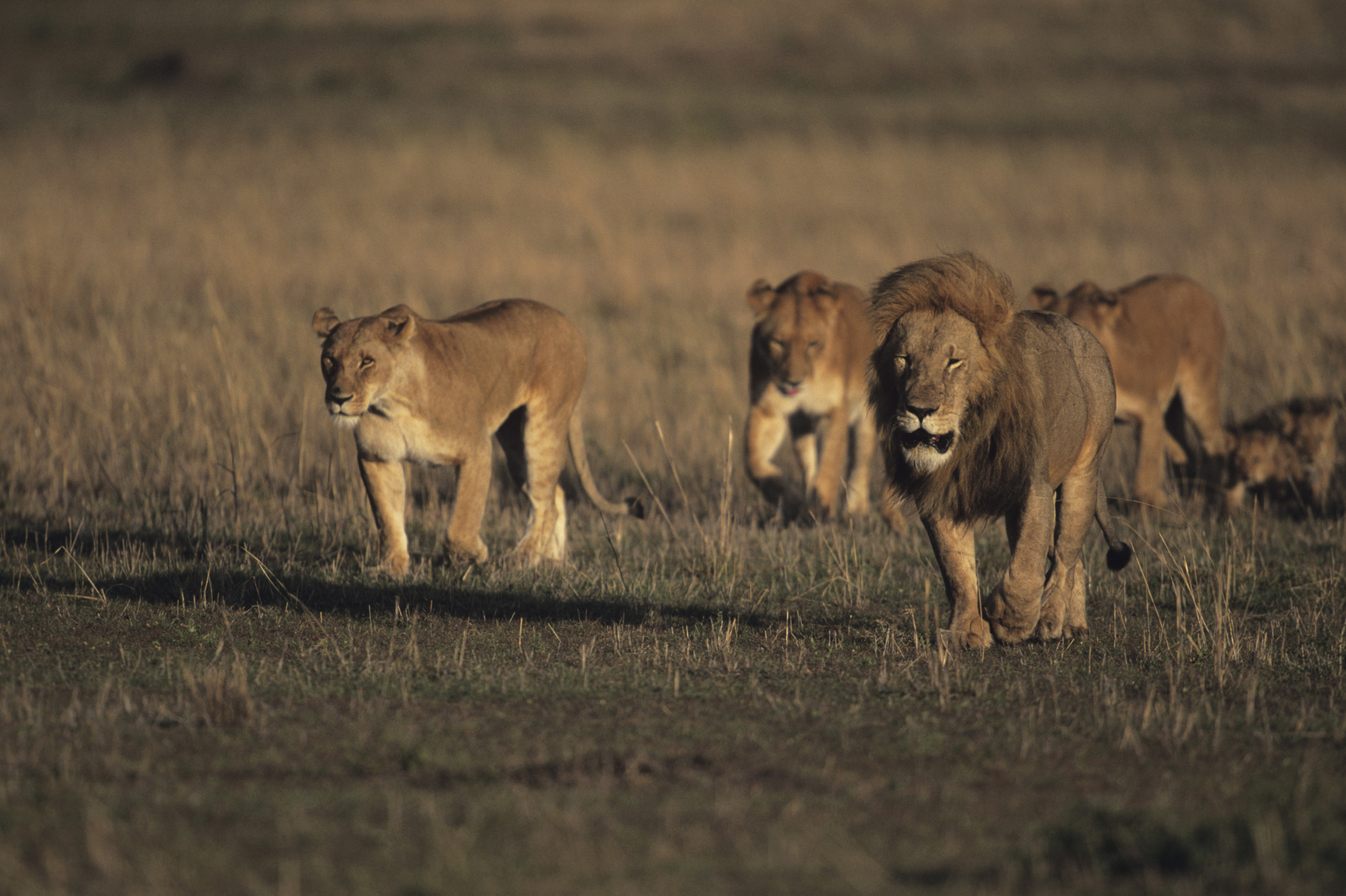So you’re curious about how lions decide who’s the leader? Well, it turns out that these majestic creatures have a fascinating system of determining their alpha. It’s not just about brute strength or fancy manes, but rather a unique combination of factors that come into play. From displays of dominance to intricate social dynamics, the lion pride has a complex hierarchy that ensures the survival and success of the group. In this article, we’ll explore the intricate world of lion leadership and uncover the fascinating ways in which they establish their king of the jungle.
Hierarchy of Lions
Dominant Roles
In the hierarchy of lions, a pride is led by a dominant male and female, who are regarded as the leaders. These dominant roles are extremely important in maintaining order and ensuring the survival of the pride. The dominant male lion, often referred to as the “king of the jungle,” holds a position of power and authority within the pride, while the dominant female lion, known as the lioness, plays a crucial role in leading and protecting the pride.
Importance of Leadership
Leadership is vital in the lion pride as it determines the survival and well-being of the group. The leaders are responsible for making important decisions, providing guidance, and ensuring the overall welfare of the pride. They establish a sense of order and coordination among the members, ultimately resulting in increased chances of survival and successful hunting.
Social Structure of Lion Pride
A lion pride consists of multiple lionesses, their offspring, and a few dominant males. The social structure is based on a matrilineal hierarchy, with the lionesses forming the core of the pride. They are usually related to each other, creating a close-knit family unit. The dominant male lions join these groups for mating purposes and play an essential role in protecting the pride and its cubs.
Leadership Characteristics
Physical Strength
One of the primary characteristics of lion leadership is physical strength. Dominant lions are typically larger and possess superior strength compared to other males in the area. This physical prowess allows them to establish dominance and defend their pride from rival males. The leaders’ strength also contributes to their ability to successfully hunt and provide for the pride.
Confidence and Assertiveness
Leadership among lions requires confidence and assertiveness. The dominant lions must have a strong presence and exhibit unwavering confidence in their actions. This assurance helps maintain order within the pride and keeps potential challengers at bay. The leaders’ assertiveness ensures they can effectively protect the pride, resolve conflicts, and make decisions that benefit the group as a whole.
Ability to Provide for the Pride
A crucial characteristic of lion leadership is the ability to provide for the pride. The leaders must be skilled hunters, capable of bringing down large prey to sustain the entire pride. Their prowess in hunting ensures that the members of the pride, especially the cubs, receive the necessary nutrition for growth and survival.
Communication Skills
Effective communication is key to successful lion leadership. Lions communicate through various methods, including vocalizations, scent marking, and body language. The leaders must possess excellent communication skills to convey messages, coordinate hunting strategies, and maintain social cohesion within the pride. Their ability to communicate effectively helps establish a strong bond among the pride members and facilitates collaboration in various activities.

Male Lion Leadership
Inheritance of Leadership
Male lion leadership is often inherited within a pride. When a dominant male lion becomes too old or weak to lead, one of his male offspring from a previous mating usually takes over. This ensures a smooth transition of power within the pride and allows for stability and continuity in leadership.
Challenges to Leadership
Leadership among male lions is not without challenges. Other male lions from neighboring territories may try to challenge the dominant male for control of the pride. These challenges can be fierce and often involve intense battles, as the challenger attempts to usurp the current leader’s position.
Maintaining Leadership Position
Once a male lion assumes leadership, he must work to maintain his position. This involves asserting his dominance over the lionesses and ensuring the safety and well-being of the pride. The leader must be vigilant and ready to defend the pride from rival males or internal power struggles that may arise within the group.
Female Lion Leadership
Matrilineal Leadership
Unlike many other animal species, lion leadership is matrilineal. It is the lionesses who form the core of the pride and hold significant influence over its dynamics. The dominant female lion, or lioness, assumes a leadership role in guiding and protecting the pride. Her position is crucial in maintaining order and ensuring the survival of the group.
Assuming Leadership Role
When a dominant lioness assumes a leadership role, she takes charge of various aspects of the pride. She leads the hunting expeditions, teaches the cubs important skills, and makes critical decisions regarding the pride’s movements and safety. The lioness must display confidence, strength, and intelligence to effectively lead her family.
Defending Pride and Cubs
One of the primary responsibilities of a female lion leader is defending the pride and its vulnerable cubs. She acts as the first line of defense, protecting the group from potential threats such as rival males, predators, and intruders. The lioness seamlessly switches between the roles of caregiver and protector, ensuring the survival and well-being of her family.

Compatibility and Cooperation
Leadership Roles Within Pride
Within a lion pride, the dominant male and female lion work together in a complementary manner. The male typically focuses on defending the pride from external threats and ensuring its territory remains secure, while the female lion concentrates on raising and protecting the cubs. This division of responsibilities allows for a harmonious balance of leadership within the group.
Collaboration between Males and Females
Leadership in a lion pride necessitates collaboration between males and females. The leaders must work cohesively to establish and maintain order, coordinate hunting efforts, and protect the pride. This collaborative approach ensures the overall success and survival of the group, leveraging the strengths and abilities of both sexes.
Dynamic Balance of Power
The dynamic between male and female lion leaders creates a balance of power within the pride. Each sex has a unique role and set of responsibilities, and their cooperation fosters stability and efficiency within the group. The balance of power allows for shared decision-making and ensures that the needs of all pride members are met.
Challenges to Leadership
Rival Males and Takeover Attempts
The authority of lion leaders is constantly challenged by rival males. These challengers are often younger and stronger lions seeking to assert their dominance and take over the pride. When confronted with a takeover attempt, the current leader must defend his position through physical confrontations and displays of dominance.
Internal Power Struggles
Power struggles can also arise within a pride, particularly when there is a change in leadership or when dominant lionesses vie for control. These internal power struggles may lead to conflicts and disrupt the cohesion of the group. The leaders must intervene and find ways to restore order and maintain harmony within the pride.
Dealing with Disobedience
Even within a well-structured hierarchy, instances of disobedience may occur. Lion leaders must address such behavior promptly to maintain order and ensure the pride’s survival. By using intimidation, vocalizations, or physical displays of dominance, the leaders reassert their authority and discourage disobedience among the pride members.

Leadership Development
Cubhood and Observational Learning
Leadership development in lions begins during cubhood. As young cubs, lions observe and learn from the dominant leaders within the pride. They witness hunting strategies, communication methods, and social interactions, gradually acquiring the necessary skills and knowledge to become future leaders themselves.
Subordinate Role and Learning from Others
As lions mature, they often assume subordinate roles within the pride. During this phase, they continue to learn from the dominant leaders by observing their actions and participating in various activities. This period of subordination allows young lions to further refine their skills and develop their leadership potential.
Transition to Leadership
When the time comes, a young lion will challenge the existing leader or leave to establish his own pride. This transition to leadership is crucial and requires the lion to demonstrate physical strength, confidence, and effective communication. Through experience and learning from both successes and failures, the new leader gradually establishes his position within the social hierarchy.
Communication in Leadership
Roaring and Vocalizations
Communication plays a vital role in lion leadership, and roaring is one of the most recognizable forms of communication. Roaring serves multiple purposes, including asserting dominance, warning intruders, and coordinating the movements of the pride. The leaders’ ability to roar effectively conveys messages and establishes authority within the group.
Scent Marking
Another method of communication among lion leaders is scent marking. Lions possess scent glands, and they use their urine, feces, and secretions to mark their territory. This scent marking not only helps establish the pride’s boundaries but also communicates vital information to group members and potential rivals.
Body Language
Lions also rely heavily on body language to communicate with one another. Various gestures, postures, and facial expressions convey messages about dominance, submission, aggression, or playfulness. The leaders’ ability to interpret and respond to the body language of pride members is crucial in maintaining effective communication within the group.
Decision-Making
Consensus within the Group
Leadership in a lion pride involves making critical decisions for the well-being of the group. While the dominant leaders hold ultimate authority, decisions are often made through consensus. By gauging the reactions and responses of other pride members, the leaders consider different perspectives and strive to reach a collective agreement that benefits the entire pride.
Conflict Resolution
Conflicts can arise within a pride, especially during times of scarcity, mating season, or territorial disputes. The leaders play a vital role in resolving these conflicts and restoring order. Through intimidation, physical displays, or vocalizations, they assert their dominance and mediate disputes among the pride members.
Democratic Decision-Making
Lion leaders often display a democratic approach to decision-making. They consider the needs and opinions of various pride members, especially the lionesses, and aim to reach a consensus. This inclusive decision-making process promotes cooperation, strengthens social bonds, and ensures the survival and well-being of the entire pride.
Impact on Survival
Hunting Success
Leadership among lions has a direct impact on hunting success. The leaders’ ability to coordinate hunting efforts, establish strategies, and communicate effectively increases the pride’s chances of successfully bringing down large prey. This success ensures the availability of food for all pride members and directly contributes to their survival.
Protection from Predators
Strong leadership and effective communication play a crucial role in protecting a lion pride from predators. The leaders’ vigilance and assertiveness help deter potential threats and ensure the safety of the pride, especially during vulnerable periods such as when cubs are present. Their efforts create a protective environment for the group, reducing the risk of predatory attacks.
Sustaining the Population
Leadership is essential in sustaining the lion population. The leaders’ role in facilitating successful mating, protecting cubs, and ensuring the overall well-being of the pride contributes to the growth and stability of the population. Their guidance and coordination ensure that the necessary conditions for reproduction, growth, and survival are met, ultimately maintaining the lion population.


